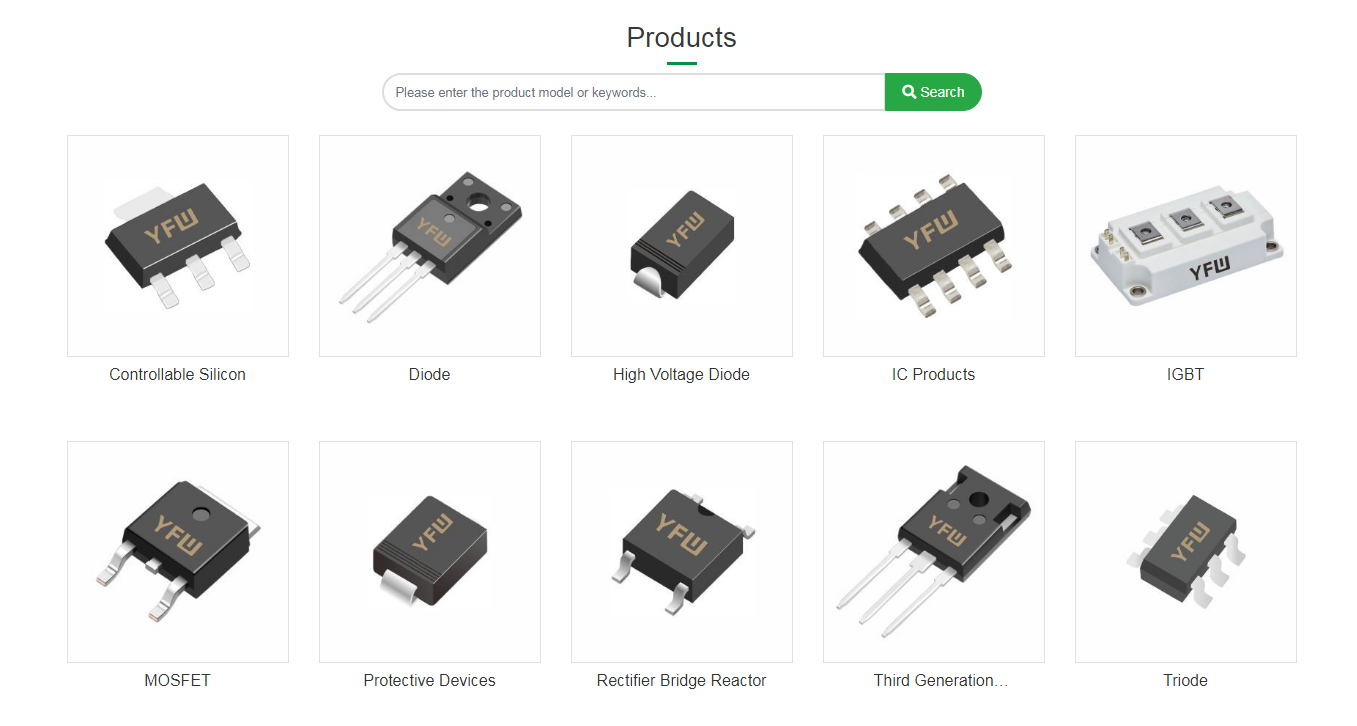Date:2025-03-18 Categories:Industry News Hits:919 From:Guangdong Youfeng Microelectronics Co., Ltd(YFW)
he trigger diode, also known as a bipolar trigger or bipolar varistor is a special diode. Compared with ordinary diodes, the trigger diode has more control methods and higher sensitivity. It can use external voltage or current changes to regulate the on off state of the device, thus realizing the control of the circuit. The following will introduce the basic knowledge of the trigger diode in detail. I. Basic structure: trigger diode is composed of three layers of semiconductor materials, in which the P-type semiconductor layer in the middle is called the trigger layer (Trigger Layer), and the-type semiconductor layers on both sides are called the main area. The structure of the trigger diode is similar to that of ordinary diodes, but the doping concentration of the trigger is lower, resulting in a higher resistance in this area. II. Characteristics: 1. Amplification capability: The trigger diode can amplify the input signal achieve signal amplification. 2. Controllability: By controlling the current in the base area, the current in the collector area can be controlled, thus achieving the control of the. 3. High frequency characteristics: The trigger diode has a high frequency response capability and is suitable for high-frequency circuits. 4. High reliability: The trigger di has high reliability and stability. III. Working principle: The working principle of the trigger diode is based on the conductivity characteristics of the PN junction. When the control junction in the forward bias state, the trigger diode is in the on state, and the current can flow through the device. When the control junction is in the reverse bias state, trigger diode is in the off state, and the current cannot pass through the device. The trigger diode can change the bias state of the control junction by external voltage or, thus realizing the control of the device. When an input signal is applied to the control junction, if its polarity causes the control junction to be in the forward bias state, the diode conducts; if the input signal causes the control junction to be in the reverse bias state, the trigger diode is turned off. In this way, by changing the polarity amplitude of the input signal, the trigger diode can be controlled. IV. Application: The trigger diode is widely used in various electronic circuits because of its high sensitivity fast speed, including: 1. Pulse circuit: The trigger diode can be used to construct various pulse circuits, such as multivibrators, counters, pulse generators,. 2. Voltage control circuit: The trigger diode can be used to construct a voltage control circuit, such as a voltage regulator, voltage comparator, etc. . Logic circuit: The trigger diode can be used to construct logic gate circuits, such as AND gate, OR gate, NOT gate, etc. 4. Amplification: The trigger diode can be used to construct amplification circuits, such as amplifiers, switch circuits, etc. V. Detection: In order to ensure the normal operation the diode, the commonly used detection methods are as follows: 1. Voltage test: Use a multimeter or oscilloscope to measure the forward voltage and reverse resistance of diode. 2. Current test: Use an ammeter to measure the forward current and reverse current of the diode. 3. Peak reverse voltage (PRV): Test the maximum reverse voltage that the diode can withstand. 4. Reverse current test: Test the leakage current of the diode under reverse voltage.

Previous:What is a Varactor Diode and its composition, classification and development trends?
Next:NZT560A 1A 80V SOT-223 Marked NZT560A Small Signal Transistor Y Micro Brand